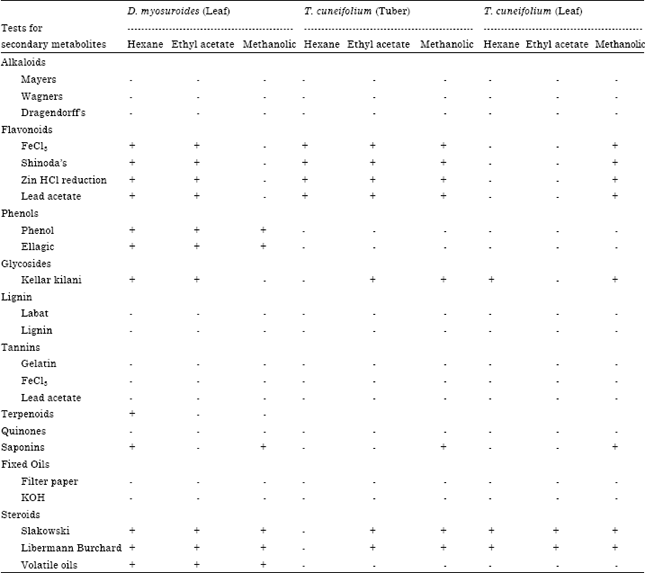Short Communication
Phytochemical Studies of Dysophylla myosuroides (Roth.) Benth. In. Wall. and Talinum cuneifolium (Vahl.) Willd
Department of Botany, S.V. University, Tirupati-517 502, A.P., India
M. Linga Rao
Department of Botany, S.V. University, Tirupati-517 502, A.P., India
Beena Prabha
Department of Botany, S.V. University, Tirupati-517 502, A.P., India









